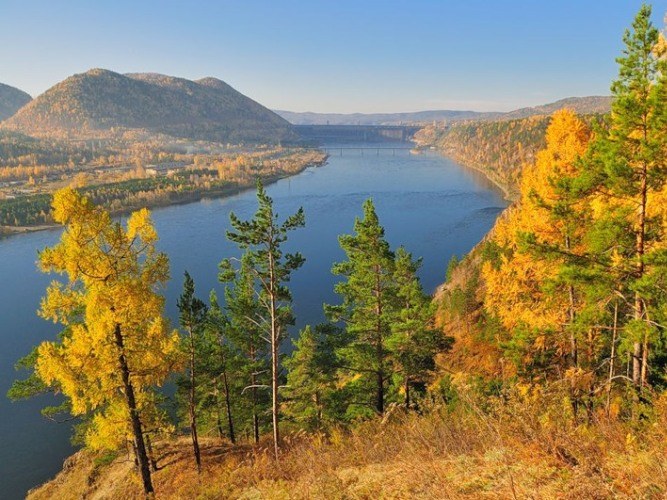The largest Siberian rivers
Ob, one of the longest rivers of Russia, originates in the Altai mountains. It was there that she formed after the connection of the Katun and Biya rivers. The river has both the left and right tributaries, chief of which is the Irtysh. The Ob river carries its waters to the Kara sea, where it forms a picturesque Bay, called the Ob lip. Near Novosibirsk on the river there is a reservoir that serves as the resting place for not only local residents but also tourists from other regions of Russia. There are many sanatoriums and other resort facilities.
The mighty Yenisei as one of the most affluent and largest rivers in the world. This river several hundreds of tributaries of different sizes. The Yenisei river is the natural boundary between the Western and Eastern Siberia. All over this magnificent waterway, you can watch the amazing scenery.
On one side of the Yenisei river are vast plains of Western Siberia, on the other side of the river you can see the mountain Kingdom of the boreal forest.
The largest river in northeast Siberia Lena. Its origins are located on the slopes of the Baikal mountains. For hundreds of kilometers around the Lena river stretched endless and impassable taiga. The coastal region is almost unpopulated. Only closer to Yakutsk near the river there is a revival – there are towns, occur small boats, barges and passenger ships. This river is the main transport artery of Yakutia.
Features of the rivers of Siberia
Almost all Siberian rivers carry their waters to the Arctic ocean. The main water artery of Siberia in terms of its length and affluent are among the ten most large rivers by world standards. Major Siberian rivers have many tributaries.
Although each of the Siberian rivers has its own unique look, they have common features. They flow from the southern regions to the North, so in its upper reaches constrained by ice during a relatively short time. Water artery of Siberia eat usually thawed snow and rain waters.
In all of the major rivers in this part of Eurasia in the spring ice drifts observed strong and powerful jams of ice blocks. Here are frequent and considerable flood, occurring usually in late spring.
In the upper reaches of the rivers of Siberia from the middle of April usually starts the flood that comes in the tundra in early summer. This period lasts about two to three months. The fall of the flow of groundwater and rainwater is significantly reduced, and since October in the upper reaches of the river starts freezing. Less deep ponds often freeze to a considerable depth. For the rivers of Eastern Siberia is especially characteristic of ice that occur after the water on the icy surface.
